home security
Latest
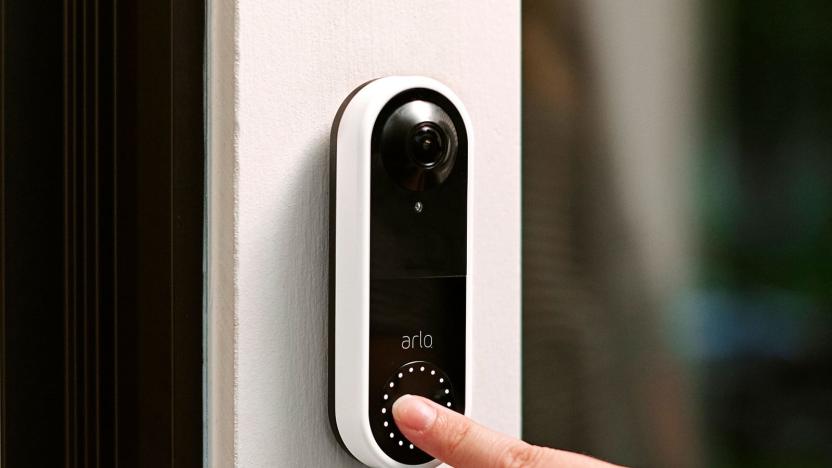
Arlo will require two-step sign-ins for its smart home devices
Arlo is following the leads of Nest and Ring in requiring tighter security for its smart home devices. It's warning customers that it'll require two-factor authentication for accounts by the end of 2020. As it explained in a support guide, you'll have to either respond to a push notification or a less secure text message whenever you sign in with a new device. Email security codes will be available as an "automatic back-up option."
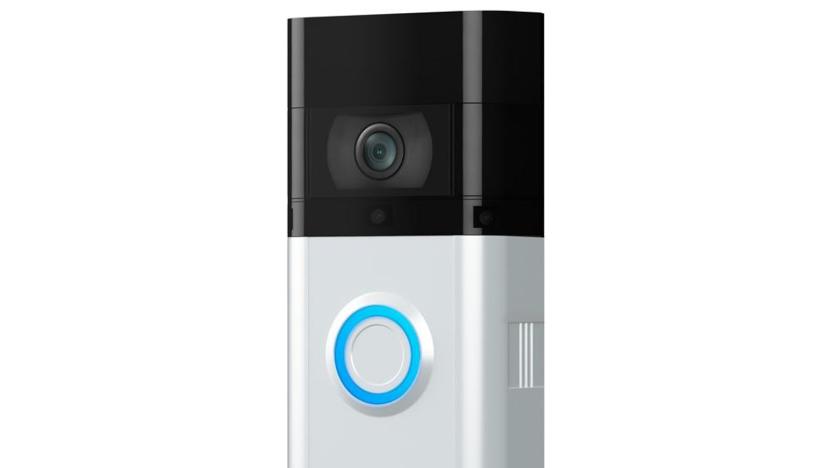
Ring's next Video Doorbell will show what happened before an alert
You don't have to wonder how Ring will build on the Video Doorbell 2 -- the company has already spoiled its plans in advance. Zatz Not Funny spotted a briefly available product page (you're looking at the cached version) for a Video Doorbell 3 series that promises a few noteworthy upgrades. If you get the higher-end Plus model, you'll get a "Pre-Roll" feature that shows four seconds of video from before a motion alert -- it'll be in black and white, but still helpful if you want to identify a would-be burglar or rambunctious animal. While the concept isn't completely novel (Arlo's Foresight does the same), Ring's model will supposedly be the first battery-powered doorbell to ship with the feature.
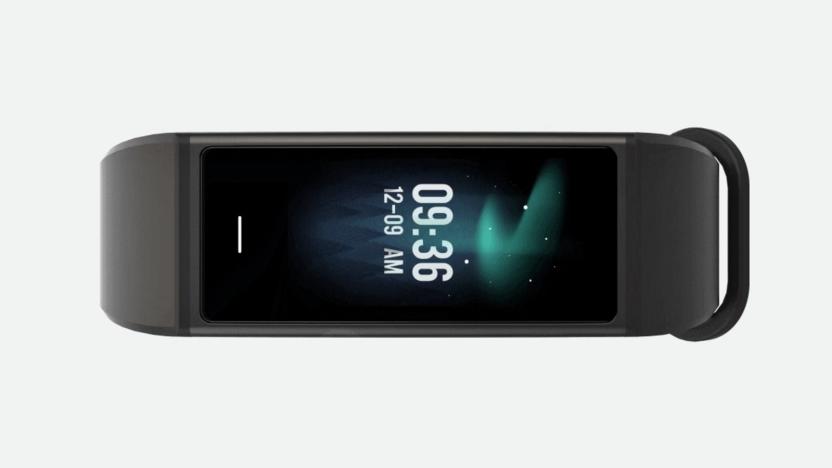
Wyze is working on a fitness tracker that puts Alexa on your wrist
Wyze initially made a name for itself offering home security devices for low prices, but a major data leak at the end of 2019 -- where the sensitive information of 2.4 million customers was exposed -- has put big question marks over its reputation as a security company. Nonetheless, Wyze seems determined to put its past transgressions behind it, and is working on a bunch of new products -- one of the more interesting of which is the Wyze Band with Alexa.
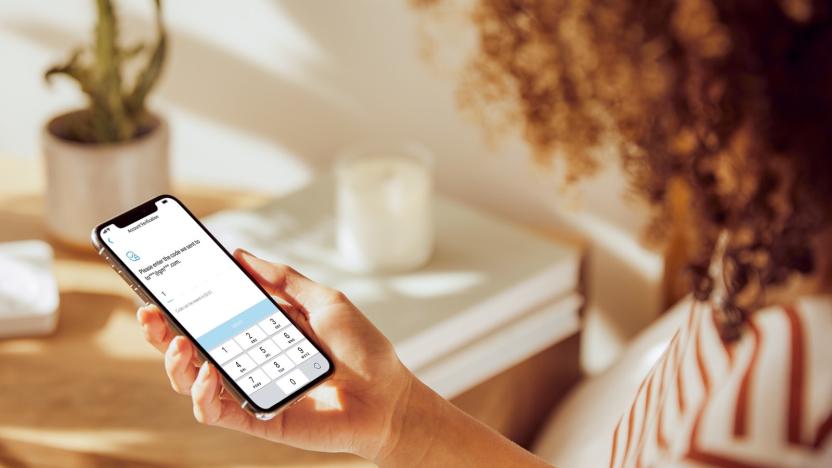
Ring now requires two-factor sign-ins for its home security devices
Ring is continuing its bid to improve privacy and security after facing criticism. As of today, the Amazon brand will start requiring two-factor authentication for all users when they sign into their Ring accounts. When the feature reaches you this week, you'll always get a six-digit code sent to either your email or (less recommended) SMS in order to complete the login process. This move will seem more than a little familiar when Nest announced a similar requirement just a week earlier, but it's still good news when it promises to raise the baseline security for Ring's smart home devices.

Ring footage might not be very useful for catching criminals
Ring has said that camera footage sent to police can help reduce burglaries and catch criminals, but how effective is it, really? It might not be as helpful as you might think. NBC News has conducted an investigation suggesting that Ring's video doorbells and security cameras haven't been of much use to at least some police forces. Of the 40 law enforcement agencies the news outlet reached, just 13 said they'd made arrests after reviewing Ring footage, while two offered rough estimates. The remainder either made zero arrests (13 agencies) or didn't know how effective Ring had been despite partnerships that had lasted more than a year.

Ring update gives you more control over police video requests
Ring is acting on its promises to improve privacy and security in 2020. The Amazon brand has introduced a Control Center in the Ring mobile app that aims to deliver more control over access and sharing. Most notably, there's a toggle to opt out of law enforcement video requests -- you don't have to wait to receive one before making a decision. Ring is unsurprisingly encouraging customers to leave it on (it has police partnerships to maintain) in the name of neighborhood security, but it's at least acknowledging that some users are uncomfortable with serving as de facto eyes for police officers.

Spectrum's exit from home security leaves people with useless tech
A host of Spectrum subscribers are about to learn the risks of tying your home security to your telecom provider. The Charter-owned cable company has notified customers that it will stop supporting its Spectrum Home Security service on February 5th. When that happens, the system will largely be useless. Individual devices should work, but the core monitoring service and remote device access (you know, the main reasons you signed up) will go away.

I remotely patrolled a house with a $10,000 security drone
Imagine you're filthy rich and have a five-bedroom home in the English countryside. How do you keep your house secure? An enormous gate with a fancy intercom system? Multiple cameras and smart locks? That's so old hat. Sunflower Labs, a company led by former Evernote executive Alex Pachikov, is pitching something far more extravagant: a residential security drone that, once deployed, can check out disturbances autonomously.
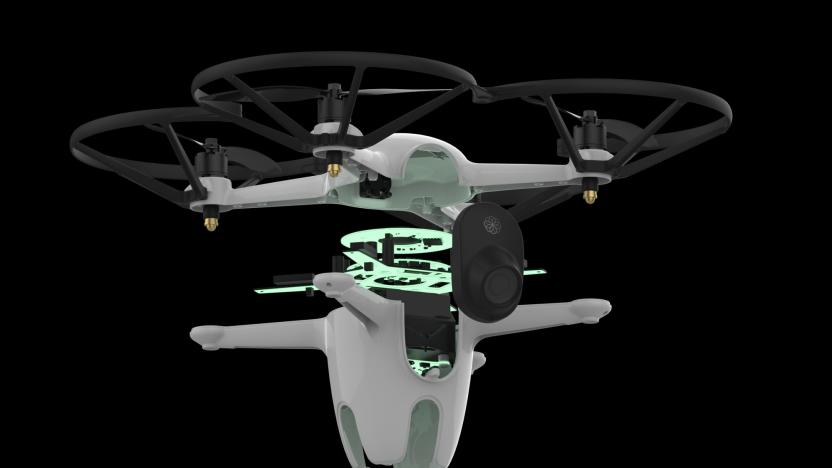
Sunflower's $9,950 security drone aims to protect your home autonomously
Home security technology usually takes the form of smart cameras or intruder-detecting WiFi routers, but a new system from Sunflower Labs offers a more radical solution -- and autonomous drone which oversees your property.
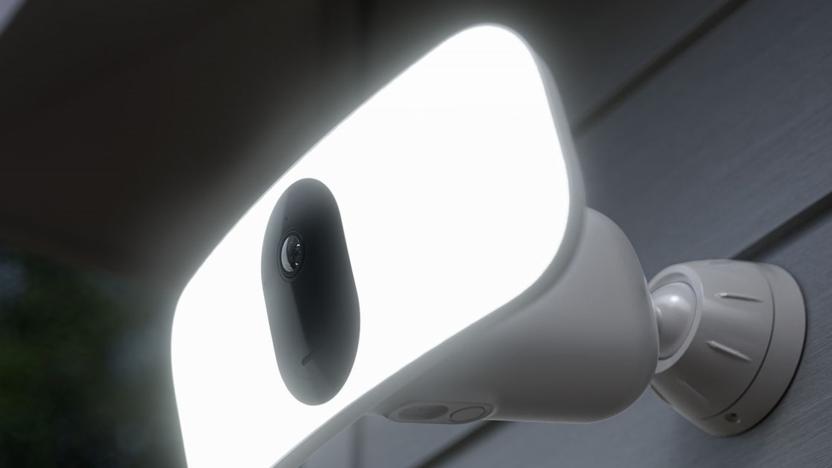
Arlo's new floodlight security camera is completely wireless
Floodlight cameras are helpful for spotting (and ideally, deterring) intruders, but they typically require some kind of wiring. Even Ring's model still requires a link to a floodlight system. Arlo, however, thinks it can one-up its rivals. Its new Arlo Pro 3 Floodlight Camera is billed as the first truly wireless option of its kind -- you can put it where you need it without any messy connections. About the only hassle is having to recharge the battery.
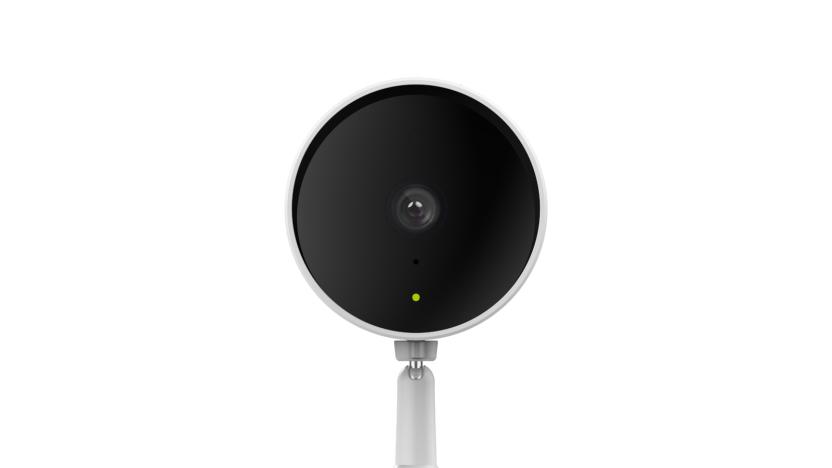
D-Link brings AI-powered person detection to its home security cameras
Ahead of CES, D-Link is bringing new features to its home security cameras. Today, the company announced that its devices can now detect people and breaking glass. The added capabilities are powered by AI that runs on the edge, and D-Link says it's able to provide faster, more accurate results than it would with cloud-powered AI.

Amazon-owned Ring is preparing its first smart light bulb
Ring is branching out from its usual doorbells and security cameras to produce truly connected lighting, although it's probably not going to replace your corner table lamps any time soon. An FCC filing has revealed that the Amazon-owned firm is prepping a Bluetooth-capable light bulb. It appears to be a floodlight that would complement Ring's existing security systems, but it's still a significant step for a company whose dedicated lighting has so far been limited to self-contained systems rather than screw-in bulbs.
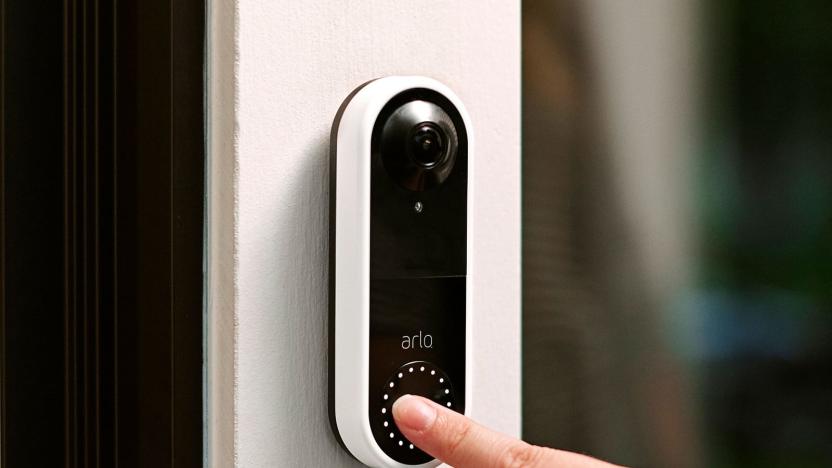
Arlo's first video doorbell provides an extra-clear view of your porch
Arlo is jumping into the video doorbell arena just a year after releasing its first smart doorbell, and it's claiming to one-up rivals with some hard-to-find features. The simply-named Arlo Video Doorbell captures footage in an unusual (for doorbells) square aspect ratio, giving you a clearer view of your front porch than many rivals. You can see a visitor's entire body, or get a better look at the package they just left at your doorstep.
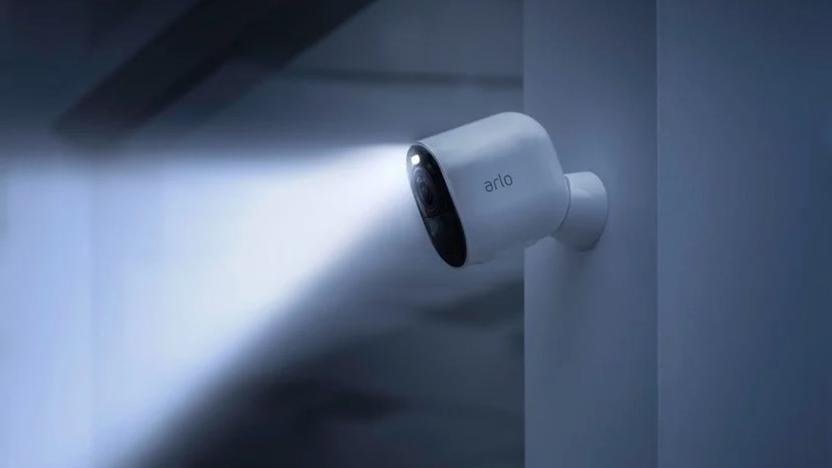
Arlo's Pro 3 security cam offers HDR and color night vision options
Ahead of Amazon's September 25th event where the company could share new security cameras from Ring, Netgear's Arlo has announced its new Pro 3 cam. Thanks to a new image sensor, the Arlo Pro 3 captures footage at 2560x1440 (QHD) with support for HDR. It also includes a wider 160-degree field of view lens.
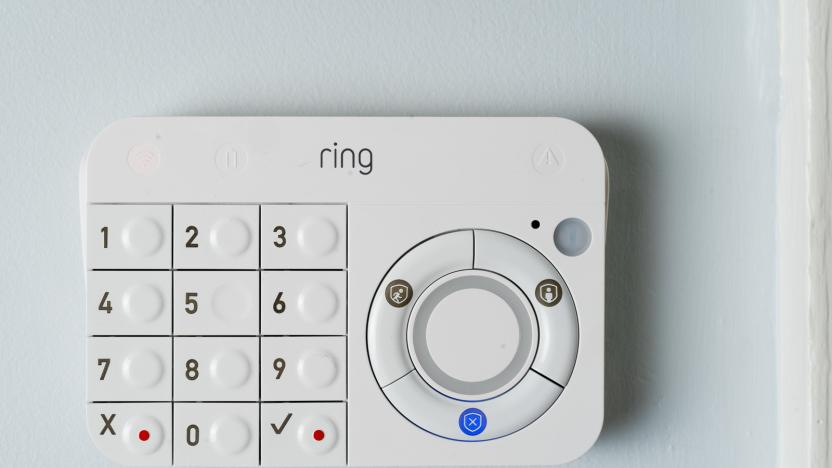
The best home security system
By Rachel Cericola This post was done in partnership with Wirecutter. When readers choose to buy Wirecutter's independently chosen editorial picks, Wirecutter and Engadget may earn affiliate commission. Read the full guide to home security systems. Peace of mind doesn't have to be pricey. Home security systems often require long contracts and pro installation, but there are smart systems you can install yourself that include a monitoring plan to keep tabs on it—and only when you want that. We found Ring Alarm to be the most affordable, comprehensive, and easy-to-use DIY home security system that has both self-monitoring and professional-monitoring options and doesn't lock you into a contract. Ring Alarm is the most comprehensive system we tested, with the most affordable monitoring plan we found. You can expand it with a variety of Ring security cameras, including indoor, outdoor, and video doorbell cameras. It also integrates with several third-party devices via the Works With Ring program, which includes brands such as First Alert, GE, Kwikset, Leviton, Schlage, Yale, and others, giving you more customization choices than other systems offer. It's also one of the few systems to provide both arming and disarming via Alexa voice commands with a four-digit PIN. Plus, you get 24/7 live customer service. SimpliSafe has a better-looking system than Ring, with voice prompts and support for Google Assistant as well as Amazon Alexa (but not Apple HomeKit). It also has add-ons such as a video camera, a doorbell camera, smoke alarms, and additional sensors. Unlike the Ring Alarm system, however, it doesn't offer outdoor cameras or self-monitoring options; you also can't add any non-SimpliSafe devices, and live customer service is available only from 9:00 a.m. to 12:00 a.m. Eastern.

Alexa Guard is ready to turn your Echo into a home security device
It took more than half a year to come to fruition, but Amazon's Alexa Guard is finally a reality. Starting today, Americans can use their Echo speakers as home security devices -- tell Alexa "I'm leaving" and your devices will alert you through phone notifications if they hear glass breaking, a CO2 alarm or a smoke alarm. You can use a Drop In call to verify if there's anything wrong, and send alerts to ADT or Amazon's own Ring if you have professional security services through either brand.
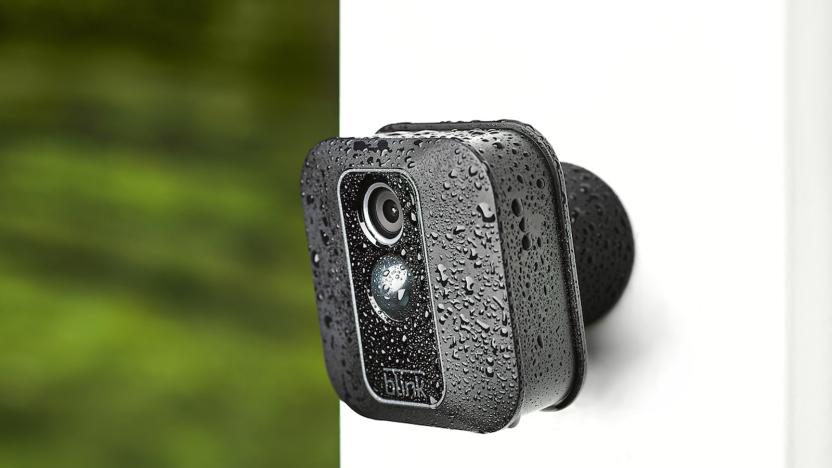
Amazon's latest Blink security camera lasts two years on AA batteries
It's now clear what the Blink team has been up to since Amazon acquired it in 2017 -- namely, a much-improved version of their core security camera. The newly-unveiled Blink XT2 looks similar on the outside, but packs several upgrades that include a dramatic improvement to battery life. The outdoor-capable camera lasts for two years of motion-activated use on a pair of AA lithium batteries. You'll also get two-way talk to ward off intruders, and refined motion detection that lets you define "micro-activity zones" to minimize the chance of false alerts. When recording video, Amazon says the XT2 will last twice as long as the previous model.

Ecobee's first home security camera might include Alexa
Ecobee's smart home lineup still revolves almost exclusively around its thermostats. It might branch out in the near future, though. Zatz Not Funny has obtained an image of what appears to be Ecobee's first home security camera. Details are incredibly scarce, but Amazon Alexa integration is likely given the company's past and a set of multi-color notification lights that can turn a familiar shade of blue.

Belkin WeMo home automation line expands with family of new sensors
Belkin's iOS-friendly WeMo home automation line took another big step forward today with the announcement at CES in Las Vegas of a new line of sensors. For those who want to create a subscription-free security system, the new devices are just what the doctor ordered. The sensors are battery-powered with a one-year battery life, perfect for easy installation by anyone. Pricing at this time is undetermined, and Belkin says that the new products will arrive in the second half of 2015. First up is the WeMo Door and Window Sensor, which is a magnetic contact switch used to determine if a door is opened or closed. This is perfect for making sure that doors and windows are closed when leaving the house, or for setting up rules to automate other processes when a door or window is opened or closed. Need to find out if a specific window or door is open or closed? Just use the free WeMo app to find out. Next is the WeMo Keychain Sensor, a keychain fob that tells the system when someone arrives at or leaves a home. A button on the sensor can be set up to control any other WeMo device when pressed - perfect if you've set up a WeMo Maker Switch to open your garage door. The WeMo Alarm Sensor is designed to listen for other battery-powered alarms - smoke or fire sensors, CO monitors, water leak detectors - and then notify you via the app, notifications, or text alerts when those devices are beeping. With the proper alarms, the sensor, and the WeMo app, homeowners can contact emergency responders or neighbors immediately in case of fires or leaks. A popular device for home security system is a room motion sensor using infrared heat signatures to detect human movement in a room. The WeMo Room Motion Sensor is immune to pets, designed to reduce the possibility of false alarms, and can be set to work with other WeMo devices when motion is detected. Finally, the WeMo Water with Echo Technology is quite intriguing. The device is attached to one point on a home plumbing system and senses and analyzes the pressure change vibrations caused by turning on a faucet or flushing a toilet. WeMo water is designed to calculate home water consumption, duration and cost, and can alert users to leaks in a plumbing system. WeMo Water is current undergoing field trials and will be on display at the 2015 Internation CES. As always, TUAW will be reviewing the new devices when they become available as part of our continuing - and growing - coverage of connected devices in the Apple ecosystem.
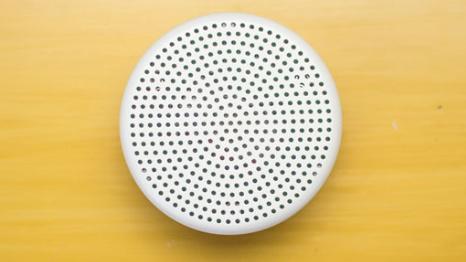
Point: Keeping an eye on your home with electronic ears
When it comes to home security, sometimes those little webcams can be a little too obtrusive. For example, let's say that you share your home via AirBnB -- do you really want to see your guests walking around in bathrobes (or less)? Likewise, the guests might not like having the all-seeing webcams staring at them all the time. Well, a couple of Swedish entrepreneurs -- one with a long history of design work at Apple -- have just the solution. Point (US$79 pre-order price) is a Kickstarter campaign aimed at creating an inexpensive home monitor designed to listen for important events, then tell you when something is going on via an app. As co-founder and CEO of Form Devices Nils Mattisson (ex-Apple) notes, "Peace of mind when you're away from home shouldn't have to mean cameras at the dinner table." The Point device listens for ambient sounds, can sense smoke particles in the air, and informs you when events like windows breaking, alarms going off, or guests coming into a home occur. The small round connected device can be set up to respond to events based on rules that you set up. If guests are partying too loudly, it can glow yellow to remind them to keep things quiet. A loud noise at night can act as a trigger for Point to light up, hopefully scaring off would-be burglars. Point features integration with IFTTT so that you can create your own notification mashups with other sensors, and is powered by batteries so it can be installed just about anywhere. The Kickstarter campaign kicked off on Tuesday and has already surpassed its US$50,000 goal with four weeks to go. Supporters can expect to get their Points in July of 2015.






